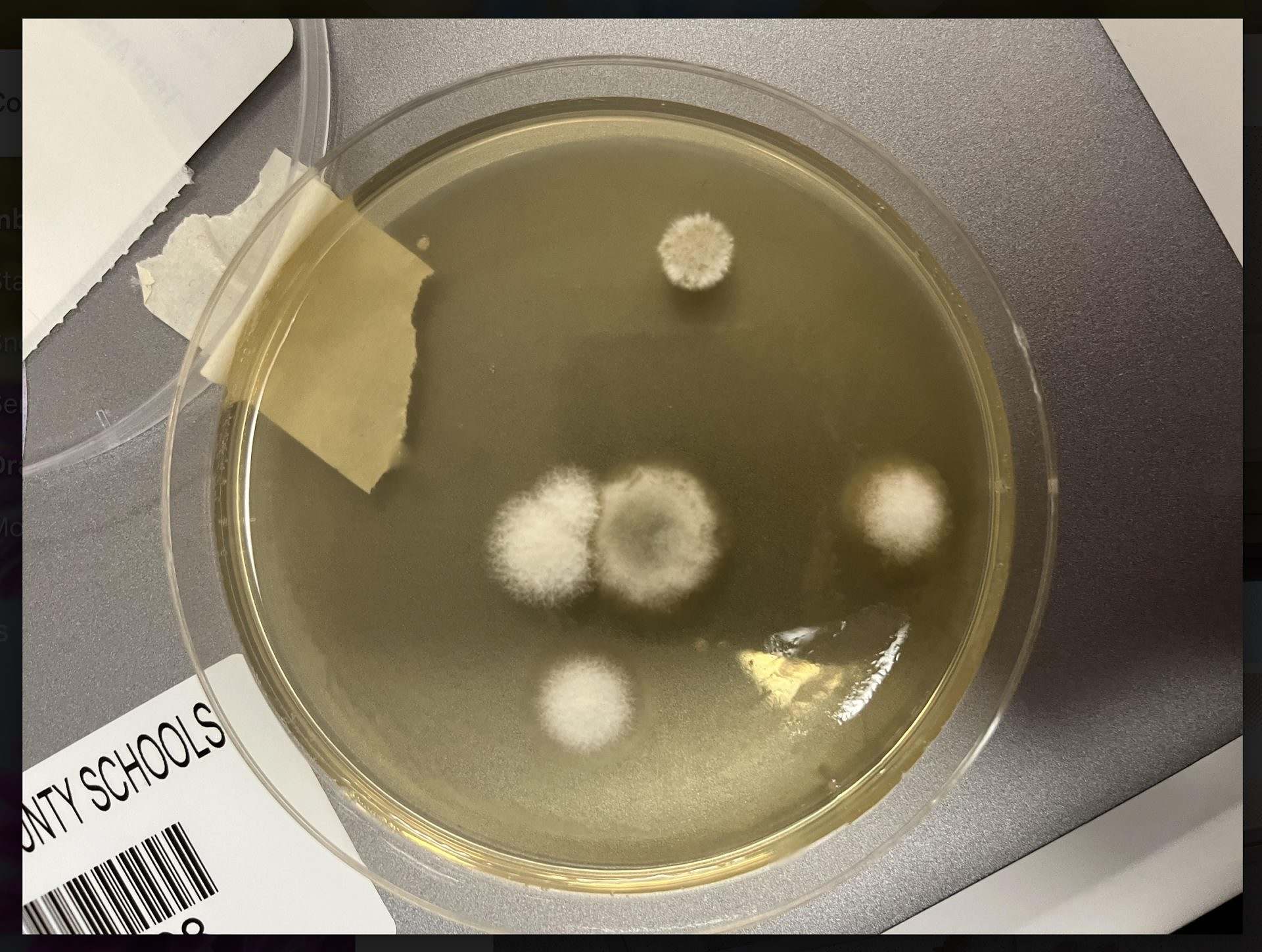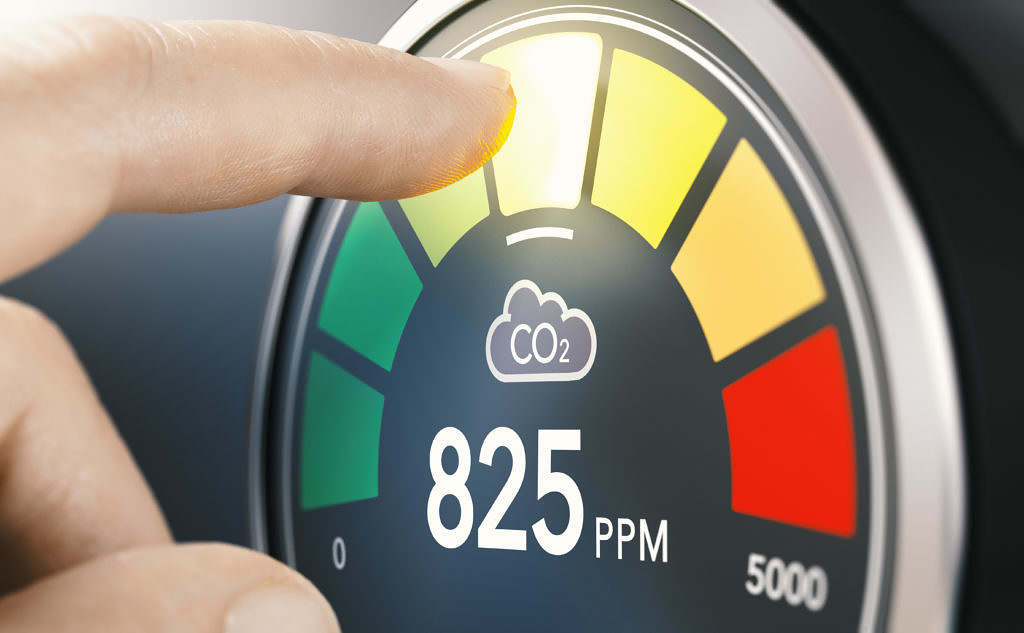|
Getting your Trinity Audio player ready...
|
Weeks after repairs purported remedied the problem, carbon dioxide levels at Whitesides Elementary School in Mount Pleasant, South Carolina continued to exceed nationally recognized health-based recommendations for children in classrooms. Meanwhile, parents and teachers are growing increasingly concerned about ongoing symptoms they believe to be the result of exposure – and the failure of school officials to adequately identify and correct the problem.
The Charleston County School District (CCSD) initially claimed their guiding standard for carbon dioxide was based on based on guidance from the U.S. Occupational Safety and Health Administration (OSHA) and the American Society of Heating and Air-Conditioning Engineers (ASHRAE).
“The district follows an internal standard business practice for action to address every indoor quality complaint,” explained Andy Pruitt, the district’s director of communications. “This standard business practice uses OSHA and ASHRAE guidance for recommended (not required) CO2 levels. Action is taken whenever readings consistently exceed these recommended levels.”
However, it was only the significantly higher OSHA standards that were quoted to parents and the media as the administration simultaneously released the sampling results that verified students were being exposed to significantly elevated levels of carbon dioxide. The results were higher than levels at which symptoms commonly occur.

***
OSHA recommends a limit of 5,000 parts per million (ppm) limited to eight hours a day for adult workers. This is the level at which toxicity or oxygen deprivation may occur in adults.
ASHRAE guidelines for carbon dioxide in classrooms specifically relevant to school children is 800 ppm – due to the onset of symptoms at higher levels including sleepiness, headaches, and difficulty concentrating as well as the proliferation of viruses that thrive and are more easily transmitted in C02-rich environments.
This media outlet reported on the ASHRAE standard last month – and the district requested our source.
“Throughout our research to determine our protocols, we have not seen that number,” the district responded. “ASHRAE position document on CO2 (attached) does say the following a few times: The 1989 edition of ASHRAE’s ventilation standard, Standard 62 (subsequently Standard 62.1), had a CO2 limit of 1000 ppmv, but this was removed from subsequent editions due to its common misinterpretation.”
This trickiness over the numbers was very much in line with the language employed by the school’s new principal Michelle Conner on October 17.
“Although the levels are above what is seen in similar environments, they are well below the level that is considered unhealthy indoor air quality,” she said.
(Click to view)
Despite what appears to be a deliberate attempt on the part of the district to artificially minimize the poor sampling results, parents caught on – and encouraged our media outlet to dig deeper.
Parents and teachers contributed photos and sampling results to assist in our investigation.
Here’s what they told us:
- Dozens of students are sick – and they aren’t the only ones. Many Whitesides teachers are also suffering from symptoms experienced over several months – symptoms that improve once they are no longer in school.
- Parents volunteering in their children’s classrooms have experienced symptoms.
- There is a fear that the district is not fully investigating and resolving its mold problem.
Concern rose to outright alarm when a pair of four-year-old students could not be awakened from their naps earlier this year. The problem happened more than one time – to each student. Still, the district provided parents little in the way of information – and appeared to be resisting any suggestion that these medical emergencies were the result of elevated carbon dioxide levels in the building.
Eventually, the district identified problems with the school’s HVAC system which were allegedly impeding ventilation – and potentially contributing to the carbon dioxide problem. HVAC repairs commenced on October 16, 2023 and were completed three days later. Parents hoped the district would provide answers, action and guidance following the repairs. Yet, little was communicated aside from a note about the HVAC upgrade and the scheduling of two eLearning days – declared out of an “overabundance of caution”.
In response to the medical emergencies involving the two four-year-olds, the district simply eliminated the scheduled nap time – although it claims that solution is only temporary.
“Full naps (laying down) for Pre-K classrooms were suspended for a few weeks but will resume after Thanksgiving break based on requests from parents and/ or the needs of students,” Pruitt said. “Students have been resting with their heads down on the tables.”
(Click to view)

During the last week of October, school board member Ed Kelley conducted an unscientific experiment of his own to quell discontent expressed by parents over what they feared was a dangerous situation. He decided to spend a night in the kindergarten room where the two medical emergencies occurred to prove the concerns were unfounded. Several parents told us this might have been a fine plan if Kelley’s aim was to prove the room was not haunted, but they viewed Kelley’s slumber party as a creepy breach of security – and a farce.
While parents’ concerns were being dismissed, the school once again saw spiking levels of carbon dioxide.
“CCSD is grateful for the teacher and parent advocates who are part of the Whitesides community, who, together with school administrators, can discuss and address concerns about air quality inside the building,” a statement released by the district noted. “Unfortunately, on October 31, 2023, while engineers were on site doing recommissioning calculations, it was noted that two outdoor air units had gone offline. This contributed to the higher CO2 levels recorded that day. CCSD technicians began repairs immediately, which were completed by November 2, 2023.”
District officials said they began school on Wednesday November 1, 2023 “with classroom doors open until students arrived for classes to maintain the fresh air mix.”
“Nothing surpasses CCSD’s responsibility to provide a safe learning environment for everyone,” the statement added. “The district is committed to finding a path forward together so that those who work in and attend Whitesides feel secure. We have taken steps to determine the cause of the issues. The situation on October 31 was a regrettable and frustrating setback. We remain committed to identifying the problem and doing whatever is necessary to solve it, of which parent and teacher advocates have been vital partners.”
(Click to view)
Despite the second round of HVAC repairs, carbon dioxide levels at the school continue to spike. Daily CO2 monitoring is being performed and the results posted in a publicly available spreadsheet. Sampling takes place two to four times a day with the first set of results documented prior to the start of the school day – and before students enter the building. These results are all well within ASHRAE classroom guidelines. However, readings taken after the school is full of students are another story – often spiking to levels at or near 2,000 ppm.
It stands to reason that carbon dioxide levels would increase in a room full of students. After all, everyone exhales CO2 as a normal part of breathing. Carbon dioxide levels are expected to increase with occupancy in a classroom with closed doors and windows – and poor ventilation further compounds the situation.
Still, the levels increase throughout the day – often to symptomatic levels. The elevated carbon dioxide levels are not limited to one or two places on the school campus. On average, these elevated levels are being detected in 24 different areas of the school every day.
***
DATA-BASED CONCLUSIONS …
The following analysis is based on monitor readings represented by thirteen (13) data sets and reported by the school from November 8 to November 14 – during hours when students were in the building.
- Averages of five of the 13 data sets exceed the ASHRAE standard of 800 ppm indicating that the levels are problematic (symptomatic) more than one-third of the time.
- In each data set between seven and 44 of the areas sampled had elevated CO2 monitoring readings that exceed the ASHRAE standard.
- The data set with the most elevated values is from November 9. The highest reading from that set was 1912 ppm. The lowest reading was 407 ppm. The average was 1108 ppm. Readings in 44 areas were elevated above 800 ppm.
This could very likely mean another source of CO2 is causing the problem – yet despite the evidence provided by teachers and parents, the district is not acknowledging the widespread sickness that may be the result of environmental conditions inside the building.
“The number of students and symptoms seen in the Mamie P. Whitesides Elementary School clinic are typical of other schools,” Pruitt said. “The district’s Nursing Services Department and the school nurse continue to monitor clinic visits for any unusual trends in illness.”
The district offered no statistics to support these claims.
What is causing the carbon dioxide to increase to symptomatic levels daily?
In an attempt to identify potential sources, the school district performed carbon dioxide sampling at the property line it shares with Mount Pleasant Waterworks – the neighboring wastewater treatment facility. While such a facility has the potential for environmental hazards of its own, sampling ruled out the possibility that it was contributing to elevated CO2 levels in the school.
“Mount Pleasant Waterworks (MPW) was contacted by Charleston County School District (CCSD) earlier this month about an indoor air quality concern at Whitesides Elementary,” said Stephanie Freudenheim, the district’s records and information management administrator. “CCSD performed numerous indoor and outdoor analyses for carbon dioxide on their property and wanted to eliminate MPW’s wastewater treatment plant next door as a contributing factor. In an abundance of caution, CCSD staff sampled MPW’s perimeter fence line on 11.08.2023. Six sample sites were monitored, and the average carbon dioxide levels were 438 ppm.”
Looking in a different direction, the complaints of some prompted environmental sampling in the first quarter of 2023 and additional spore sampling was performed in October 2023. Sampling reports indicate the presence of another culprit that may be the source of the spiking CO2 and exposure to this culprit may help to account for some of the symptoms students and teachers are experiencing. That culprit is mold.
Not surprisingly, the district claims mold is not a problem at the school.
“Four levels of indoor air quality testing by three entities have occurred at the school since last February using spore trap samples, the latest being on October 26th,” Pruitt said. “None of those tests indicated the prevalence of mold. However, to be as thorough as possible, another round of testing will occur next week (Nov 20-24) using a different methodology to rule out any undetected sources from previous tests.”
Here’s the thing. According to our sources, mold is visible in several different parts of the building. Independent sampling conducted by concerned teachers indicated the presence of mold in their classrooms. Also, contrary to the statement from the district, environmental sampling conducted on the ductwork of one classroom on November 3, 2023 was clear in its conclusions: One of two ducts was found to be contaminated with mold and spores – a situation that was red flagged for remediation. Tape sampling detected fourteen different types of spores.
This could be the biggest clue yet as to the real source of carbon dioxide in classrooms. That is because mold produces CO2 – which could help explain the spikes observed in daily monitoring.
No word yet from the district on its plans for mold remediation.
Our media outlet is continuing to investigate the troubling environmental issues at Whitesides Elementary. Look for part two of this story – which will further explore the mold and spore issues that may be contributing to the carbon dioxide problem and causing health problems for students and staff.
***
ABOUT THE AUTHOR…
Callie Lyons is a relentless investigative journalist, researcher, and author known for exposing hard truths with heart and precision. As a journalist for FITSNews, she dives into high-profile and murky cases—like that of Mica Francis Miller— with fearless resolve and a sharp eye for detail, whether it’s tracking white-collar crime, uncovering religious abuse, or examining the often-bizarre behavior of those who believe they’re above the law.
Callie made waves with her groundbreaking 2007 book Stain-Resistant, Nonstick, Waterproof and Lethal, the first to reveal the dangers of forever chemicals, a story that helped inspire the film Dark Waters and influenced global scientific dialogue. Her work has appeared in numerous documentaries, including Toxic Soup, National Geographic’s Parched: Toxic Waters, and more recently Citizen Sleuth, which examines the complexities of true crime podcasting.
Whether she’s navigating environmental disasters or the darker corners of society, Lyons operates with one guiding belief: “Truth never damages a cause that is just.”
***
WANNA SOUND OFF?
Got something you’d like to say in response to one of our articles? Or an issue you’d like to address proactively? We have an open microphone policy! Submit your letter to the editor (or guest column) via email HERE. Got a tip for a story? CLICK HERE. Got a technical question or a glitch to report? CLICK HERE.





2 comments
I’m confused, what does the petri dish of penicillin fungi have to do with a high level of CO2 or mold spores?
Mold produces high counts of CO2, AND, “eats” up Oxygen— TRUE
You can become sick and suffer from CO2 toxicity if the PPM is outside of normal levels– TRUE
Mold can be on surfaces or even behind walls, pipes and ducts– TRUE